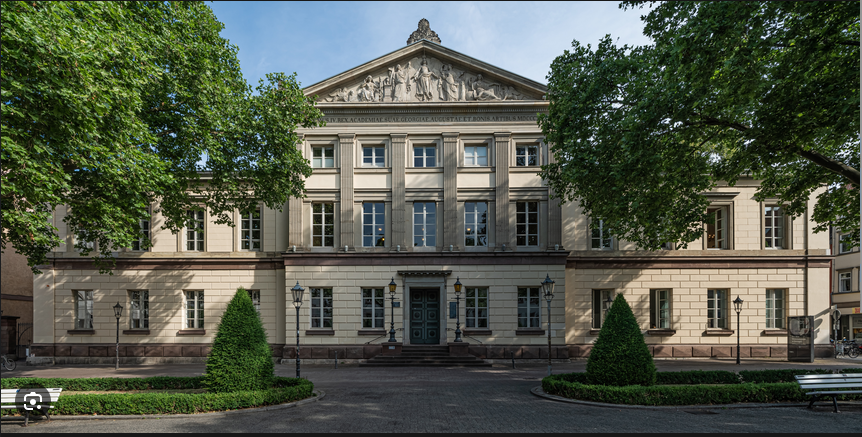Speaker
Description
Sustainability assessment of food waste reduction measures in a German university canteen
BÜTTEMEIER, Malin, ORR, Lia
Thuenen Institute of Market Analysis, Bundesallee 63, 38116 Braunschweig, Germany
E-mail: malin.buettemeier@thuenen.de
Keywords: food waste, reduction measures, sustainability assessment, food service, university
Introduction
Globally, around 1.3 billion tons of the produced food is wasted along the entire food value chain (FAO 2011). Being at the end of this chain, the food that is wasted at food service level comprises many ecological and economic resources (Kuntscher et al. 2021). To protect these resources, Germany implemented different food waste reduction measures (BMEL 2024). In food service, to support companies that are interested in tackling their FW, the Centre of Excellence for Food Service was established. Voluntarily companies can request a sustainability assessment of their implemented measures conducted by the Thünen Institute. The assessment results of a German university canteen will be presented in this abstract.
Objective
The sustainability of food waste reduction measures has been very little researched until now. Some assessment frameworks have been created by Caldeira et al. (2019) and Goossens et al. (2019) but there is more data needed to evaluate the efficiency of different reduction measures and to deduce which measures are useful for which company.
Methods
The university measured its food waste for four weeks before implementing reduction actions and after six months of implementation. To describe the costs and benefits of each action for all three sustainability dimensions (environmental, economic, social), data were gathered and accomplished by interviews conducted with two kitchen employees. For determining the environmental and nutritional values of the meals the databases Agribalyse and ANSES-CIQUAL were used. The sustainability assessment follows the framework published by Goossens et al. (2019), comprising the effectiveness (FW savings in kg), the resource efficiency (costs and benefits), the nutritional value of the food waste savings and the benefit to cost ratios. Qualitatively, the implementation effort, transferability and longevity of the measures were assessed (Goossens et al. 2022).
Findings
The university canteens (six operating sites) implemented the following five measures: Food waste measurement, optimization of Fridays, raising awareness among kitchen staff, less pre-production and more production on demand and a waste saver special. Not all measures were implemented in all operating sites. They were individually bundled and implemented simultaneously. Overall, the university was able to reduce its food waste by 1,302 kg (12 %). This involves ecological savings of 5,846 kg CO2 equivalents and 2,365 milli points Product Environmental Footprint (mPt PEF). Economically, the measures caused losses of 11,432 Euros. The ecological efficiency therefore resulted in 0.298 kg CO2 equivalents and 0.121 mPt PEF saved per invested Euro while the economic dimension resulted in an inefficiency by only saving 42 cents per invested euro. There were no social effects reported. Regarding the operating sites in detail, four locations achieved food waste reductions (between 23 and 59 %) whereas two experienced rising FW numbers (6 and 180 %). Regarding the food waste per meal (figure 1), the overall numbers slightly rose from 25.8 g to 31.10 g/ meal. In detail, three locations reduced their FW per meal between 13 and 65 % whereas the other three locations increased their food waste by 2 to 52 % per meal.
A possible reason for these diverse developments may be the low initial food waste values at the beginning of the project. The university already considered actions for FW reduction before the project, which lowered the values and therefore the potential of further reductions. On top of that, there were fluctuations in the number of guests between the two measuring periods, which could have influenced the FW numbers.
These very diverse food waste developments as well as the simultaneous implementation of the measures in bundles makes it nearly impossible to attribute the results to specific measures. Only the main economic costs can be traced back: The service provider costed 9,700 Euros and the waste saver special almost 4,800 Euros. So, comparing different service providers for FW tracking and choosing a cheaper one or do the FW measurement inhouse is recommended. A waste saver special is only recommended if its selling price covers the price of the goods and with the true meal leftovers only. The selection of other measures depends on a company’s individual financial and employee capacities and the individual realistic food waste reduction potential.
Conclusions
Overall, the university canteen was able to reduce its food waste by 12 % and saved 5,846 kg CO2 equivalents and 2,365 mPt PEF in six months by implementing five different measures. At the same time, the measures caused economic losses of 11,432 Euros. The diverse developments in the single operating sites are most likely caused by the already low FW numbers resulting in limited reduction potential as well as the fluctuations in the number of guests. In general, a recommended first step to start tackling food waste is a food waste monitoring. This measure provides an overview of the current food waste amount and sources and allows an analysis of the FW development long-term. Raising awareness among the kitchen staff was also very effective in this case study. Since then, the employees value the food even more and independently try to avoid FW wherever possible.
Bibliography
BMEL (2024): Nationale Strategie zur Reduzierung der Lebensmittelverschwendung. https://www.bmel.de/DE/themen/ernaehrung/lebensmittelverschwendung/strategie-lebensmittelverschwendung.html
Caldeira, Carla; Laurentiis, Valeria de; Sala, Serenella (2019): Assessment of food waste prevention actions. https://food.ec.europa.eu/system/files/2019-12/fs_eu-actions_eu-platform_jrc-assess-fw.pdf
FAO (2011): Global food losses and food waste. https://www.fao.org/3/mb060e/mb060e.pdf.
Goossens, Yanne; Leverenz, Dominik; Kuntscher, Manuela (2022): Waste-tracking tools: A business case for more sustainable and resource efficient food services. In: Resources Conservation & Recycling Advances 15 (19), S. 200112. DOI: 10.1016/j.rcradv.2022.200112.
Goossens, Yanne; Wegner, Alina; Schmidt, Thomas (2019): Sustainability Assessment of Food Waste Prevention Measures: Review of Existing Evaluation Practices. In: Front. Sustain. Food Syst. 3, Artikel 90. DOI: 10.3389/fsufs.2019.00090.
Kuntscher, Manuela; Goossens, Yanne; Schmidt, Thomas (2021): Lebensmittelabfälle in der Außer-Haus-Verpflegung reduzieren – Handlungsempfehlungen für die Praxis. https://www.ernaehrungs-umschau.de/fileadmin/Ernaehrungs-Umschau/pdfs/pdf_2022/02_22/EU02_2022_M68_M73_open_access.pdf

